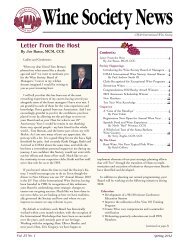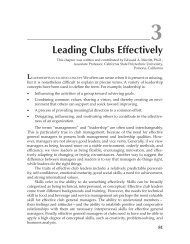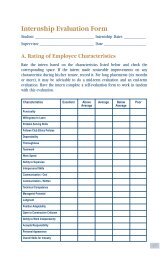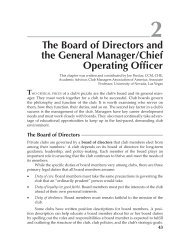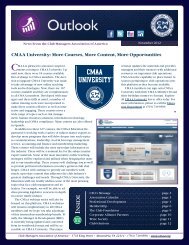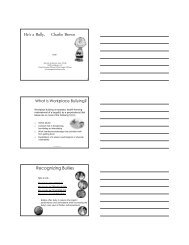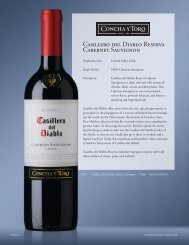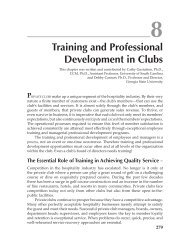Leading the Strategic Planning Process - Club Managers ...
Leading the Strategic Planning Process - Club Managers ...
Leading the Strategic Planning Process - Club Managers ...
- No tags were found...
You also want an ePaper? Increase the reach of your titles
YUMPU automatically turns print PDFs into web optimized ePapers that Google loves.
<strong>Leading</strong> <strong>the</strong> <strong>Strategic</strong> <strong>Planning</strong> <strong>Process</strong> 129handicaps, <strong>the</strong>reby severely limiting <strong>the</strong> market for <strong>the</strong> club’s course as an “everydayhome course,” or if <strong>the</strong> difficulty creates an average round time of five hours,which is a full hour longer than <strong>the</strong> typical average round target of four hours. Inthis case, club managers, <strong>the</strong> board, and o<strong>the</strong>rs must determine whe<strong>the</strong>r overall<strong>the</strong> club’s golf course as a club strength or a weakness. Alternately, <strong>the</strong> listing couldappear in both places (as both a strength and a weakness), as long as <strong>the</strong> particularcontext was explained.Once complete, <strong>the</strong> internal assessment of strengths and weaknesses helpsestablish a bundle of distinctive competencies and qualities that <strong>the</strong> club is adeptat ei<strong>the</strong>r doing or being, along with a set of issues that <strong>the</strong> club is not good at ei<strong>the</strong>rdoing or being.In conducting this analysis, remember that strengths and weaknesses areinternal to <strong>the</strong> club.Opportunities and Threats. Opportunities and threats are external to <strong>the</strong> club. Anopportunity is something that <strong>the</strong> club could explore capitalizing on. A threat cancome from a competitor, or from government regulations, or from any o<strong>the</strong>r externalsituation that presents a challenge for <strong>the</strong> club.As with <strong>the</strong> determination of strengths and weaknesses, success in determiningopportunities and threats lies in careful analysis and judgment. Often, clubs arequick to dismiss a finding as insignificant, but few findings are insignificant. In fact,those clubs that are particularly successful in identifying opportunities and threatsare those that can identify emerging trends that go unnoticed by o<strong>the</strong>r clubs.A growing trend among seasoned strategy experts is to work through opportunitiesand threats before identifying strengths and weaknesses. These expertsbelieve that opportunities and threats from <strong>the</strong> outside drive <strong>the</strong> club’s internalstrengths and weaknesses, ra<strong>the</strong>r than <strong>the</strong> o<strong>the</strong>r way around.An opportunity based on competition may be that a neighboring club burnedto <strong>the</strong> ground, and present zoning only allows it to build back 50 percent of itspre-fire square footage. This creates an opportunity for a neighboring growthclub, because <strong>the</strong> rebuilt club may no longer have <strong>the</strong> capacity to handle its formermembership.A situational opportunity for a remote club may be that <strong>the</strong> state transportationdepartment has approved <strong>the</strong> construction of a new bridge, which will put <strong>the</strong>club within 20 miles of <strong>the</strong> major population center of <strong>the</strong> area, as opposed to <strong>the</strong>40-mile journey that people in <strong>the</strong> populated area must currently take to reach <strong>the</strong>club. Because of <strong>the</strong> new bridge, <strong>the</strong> club will become more geographically accessibleand thus potentially more desirable to a larger number of people—a clearopportunity for growth.Threats can be classified similarly. A threat from <strong>the</strong> competition may includeplans for a major new country club to be built within three miles of <strong>the</strong> club. Agovernmental threat may be a lowered blood-alcohol level requirement for DUIor DWI offenses. Such a mandate might <strong>the</strong>n threaten <strong>the</strong> club’s beverage sales,and might also put <strong>the</strong> club at greater risk for alcohol liability and liquor-relatedlawsuits.



